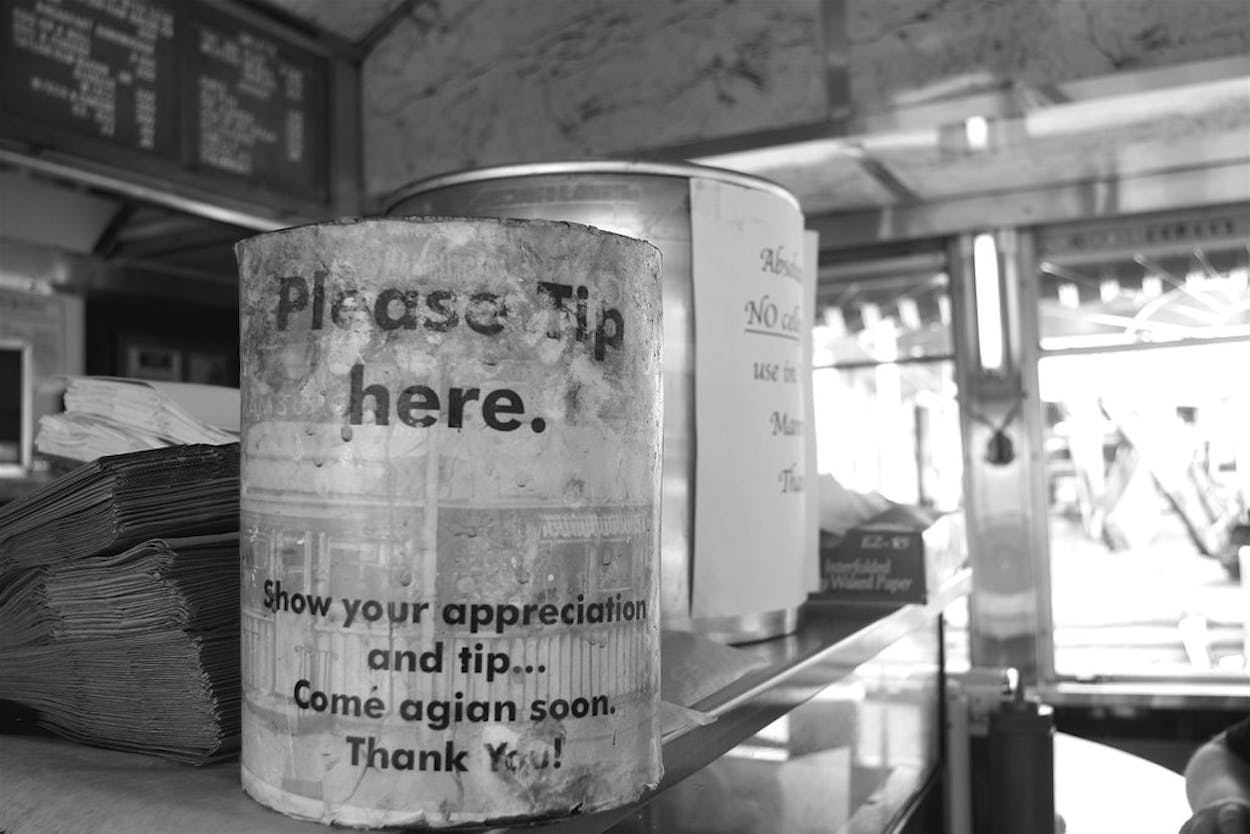If your morning coffeeshop uses an iPad with a card reader to take your payment, then you’re probably familiar with Square. And you’re likely also familiar with being asked if you want to feel like a bad tipper (15 percent or $1, depending on the amount of the purchase), a mediocre tipper (18 percent or $2), or a decent tipper (20 percent or $3). (The interface also provides users with a handy “No tip”—also known as “I’d like to feel like a complete cheapskate”—option underneath, for those who would prefer a serving of guilt with their morning caffeine.)
Prior to the existence of Square, a patron at a coffee shop or ice cream parlor might have tipped the leftover change, or maybe an extra buck. But now, on a purchase of $4, Square suggests tipping $1, $2, or $3—25 percent, 50 percent, or 75 percent. This prompts patrons to toss an extra couple bucks towards employees who are often underpaid, but it’s a slippery slope: If businesses expect that customers will compensate employees, our consumer infrastructure could become less healthy. (Think of waiters and waitresses who depend on tips to supplement a meager hourly wage.)
Services like Square have created a curious dichotomy: Even as the restaurant industry discusses big ideas like abolishing tipping altogether, the signature screen on digital payment systems encourages people to add 20% to the cost of a cupcake.
So Square’s data offers a jumping off point—but not conclusive evidence—on a question relevant to baristas and ice cream scoopers across the state: Who has the best tippers in Texas?
This week, Business Journal—using data provided by Square—published a list of the 15 best-tipping cities in the country. On that list, you’ll find all four of Texas’s largest cities: Houston and Dallas (tied for #9, with an average gratuity of 16.3 percent), Austin (#5, with 16.7 percent), and San Antonio (#4, at 16.8 percent).
Going by a city’s wealth, the findings from Square are unexpected. There’s more money, overall, in the Austin, Houston, and Dallas areas than in San Antonio: The median household income in those cities is between $44,000 and $49,000 a year, while San Antonio’s is about $39,000. So it’s surprising to see that San Antonio tips, on average, half a percentage point better than either Houston or Dallas when using Square.
Of course, it’s tricky to extrapolate from data provided from just one source to larger cultural trends across an industry, especially when the customs around tipping vary based on the kind of business. It’s possible that patrons at, say, steakhouses in Dallas tip better than the 16.3 percent they average at local businesses using Square. It’s also possible, as psychologists have noted, that since working class folks tend to be more generous than their wealthy counterparts, areas with a lower household median income—or coffeeshops and counter-service lunch spots in general—enjoy a higher tip rate.
So, which city in Texas definitively has the best tippers? Data from Square is a fine place to start, but we’ll open it up to anecdotal evidence from readers: If you’ve worked in the service industry in multiple cities, comment below and tip us off to what your experience was like.








